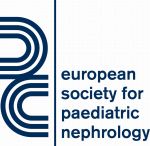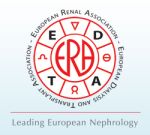About ADPKD and ADPedKD
Autosomal dominant polycystic kidney disease (ADPKD) is one of the most common monogenic causes of kidney failure with an estimated worldwide prevalence of 1 in 500-2500 live births and affecting approximately 13 million individuals worldwide, representing a major socio-economic medical problem in the world. ADPKD is characterized by the progressive development and enlargement of multiple renal cysts in all nephron segments, progressively leading to end-stage kidney disease (ESKD) in 50% of patients by the age of 60 years.
ADPKD arises as a consequence of mutations in the PKD1 (80% of patients) or PKD2 (15% of patients) genes, which encode respectively the proteins polycystin-1 (PC1) and -2 (PC2). Patients with PKD2 mutations have a milder phenotype and reach ESKD approximately 20 years later than those with PKD1 mutations. Recently, mutations causing a rare and mild phenotype of the disease have been found in other gene such as GANAB, DNAJB11 and ALG9, reflecting the phenotypic variability of the disease. Moreover, ADPKD is a systemic disorder, associated with cyst formation in other organs, mostly in the liver; cardiovascular anomalies such as intracranial arterial aneurysms and cardiac valvular defects; abdominal and inguinal hernias and colonic diverticulosis.
It is now clear that cyst development starts early in life and accumulating evidence supports that renal injury begins during childhood, with the formation of the first cysts. However, the decline in glomerular filtration rate (GFR) is not seen within the first decades. Nevertheless, 2-5% of ADPKD patients present in childhood, with a broad phenotypic spectrum. Children diagnosed with ADPKD have proteinuria in up to 35% of cases (BV Reddy and AB. Chapman. Pediatric Nephrology 2017; 32:31-42), hypertension in up to 44% (L. Massella and al. Clinical Journal of the American Society of Nephrology 2018;13: 874-883) and more than half have urinary concentrating defects (Seeman, T. et al. Physiological research 2004;53,629-634). Therefore, it is now recommended that asymptomatic children at risk of ADPKD should be monitored for hypertension and albuminuria.
There is currently no definitive curative treatment for ADPKD. As most of the studies are derived from adult cohorts, there is a lack of longitudinal data of large pediatric ADPKD cohorts. Yet, children represent a specific target population for future treatment, allowing a better chance of preserving renal function in the long term.
As adult ADPKD management has leapt up since the treatment by Tolvaptan has slow down disease progression, the results of a pediatric trial of Tolvaptan are in expectation.
Apart from total kidney volume (TKV), age and genotype, no clear prognostic indicators are defined in the published ADPKD literature, and no are known in childhood.
Together, working on ADPedKD, we will aim at completing these gaps and having a better understanding of the ADPKD pediatric perspective.
ADPedKD
ADPedKD, initiated by Djalila Mekahli (Leuven, Belgium) and Max Liebau (Cologne, Germany), is a international, longitudinal registry including ADPKD patients followed up from childhood.
This project aims to provide an observational evidence base for unified diagnostic, follow-up and treatment approaches regarding modifiable disease factors such as hypertension in order to slow down disease progression.
Inclusion and exclusion criteria have been defined (see "How to use ADPedKD"). The diagnosis of ADPKD relies on familial history, renal imaging and/or genetic criteria. After informed consent, patient data is pseudonymously introduced in a web-based database. Data protection is secured by use of SSL-connections and password restriction of the webpage. The clinical data collected, will be statistically analyzed with the help of an experienced bio-informatician. Special interest is paid to the initial clinical presentation and pre- and perinatal history.
If you would like to join the ADPKD registry ADPedKD, please fill in the registration form.







